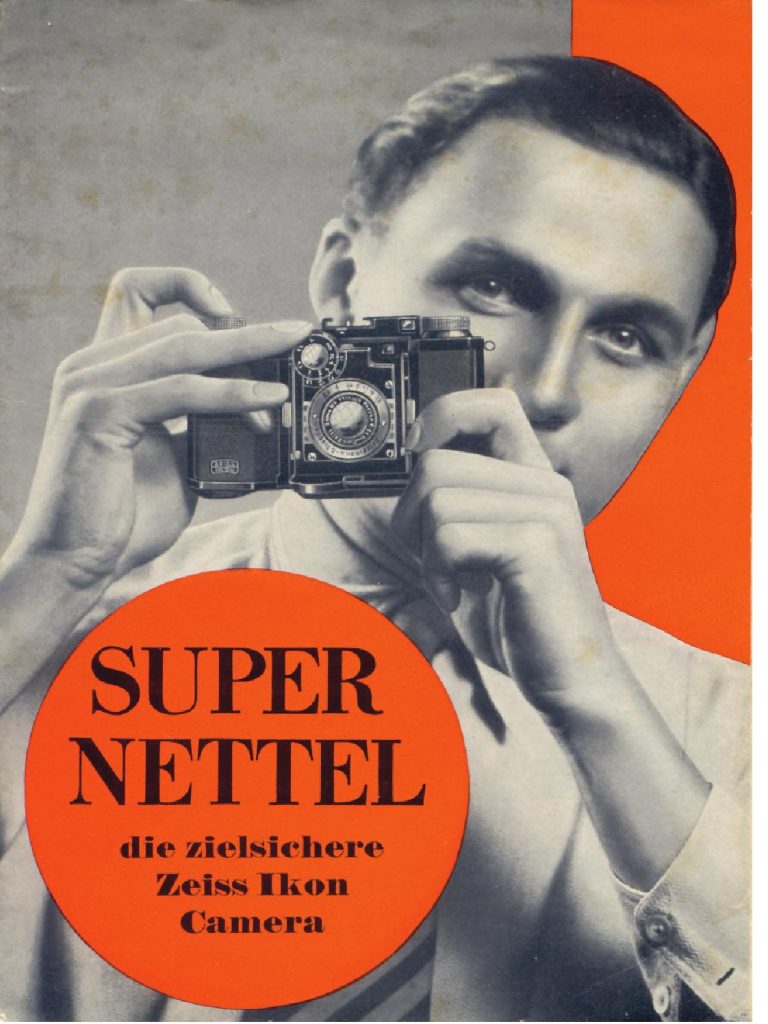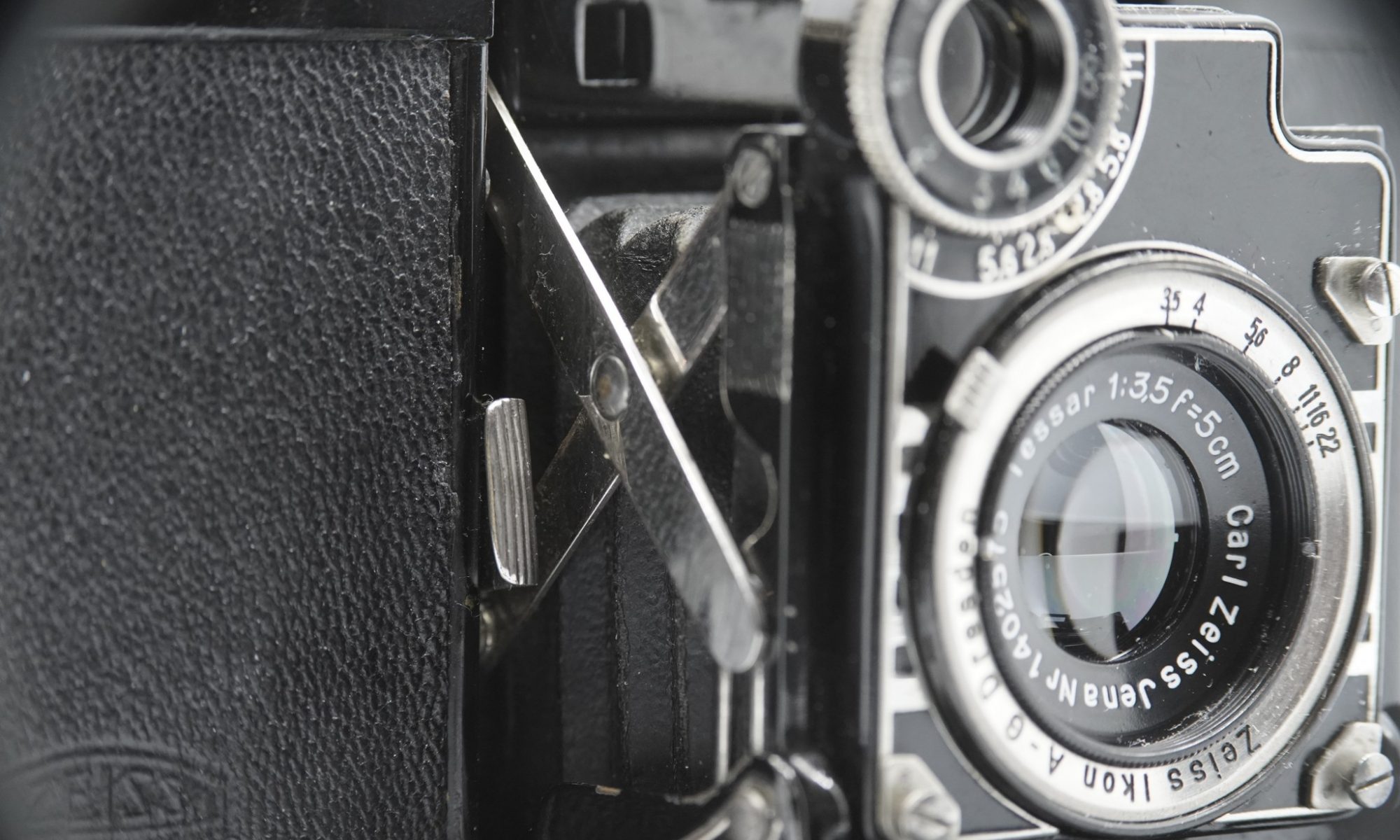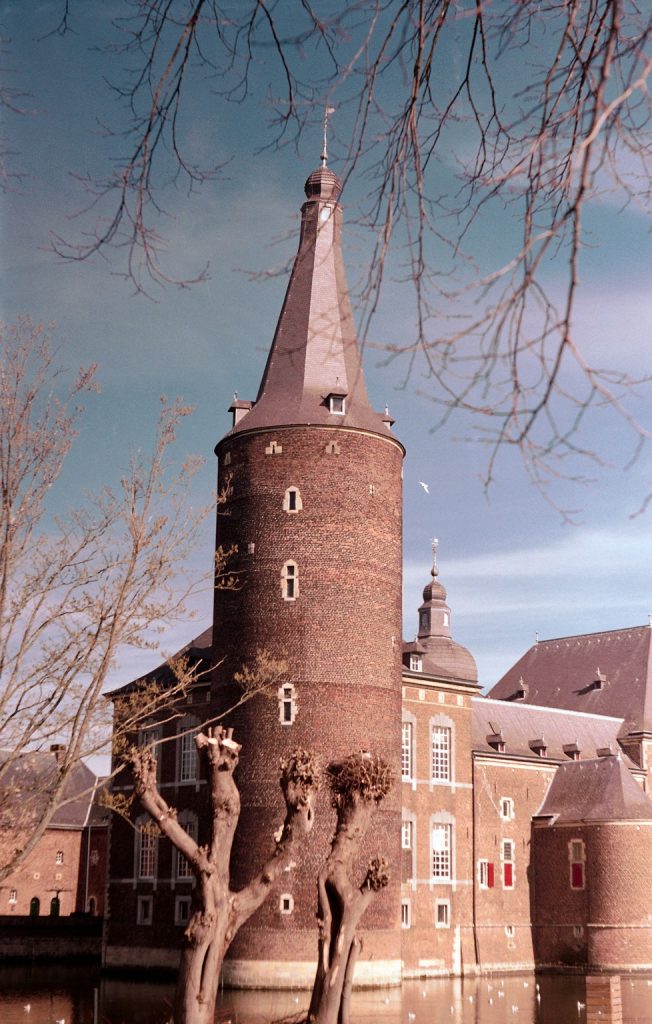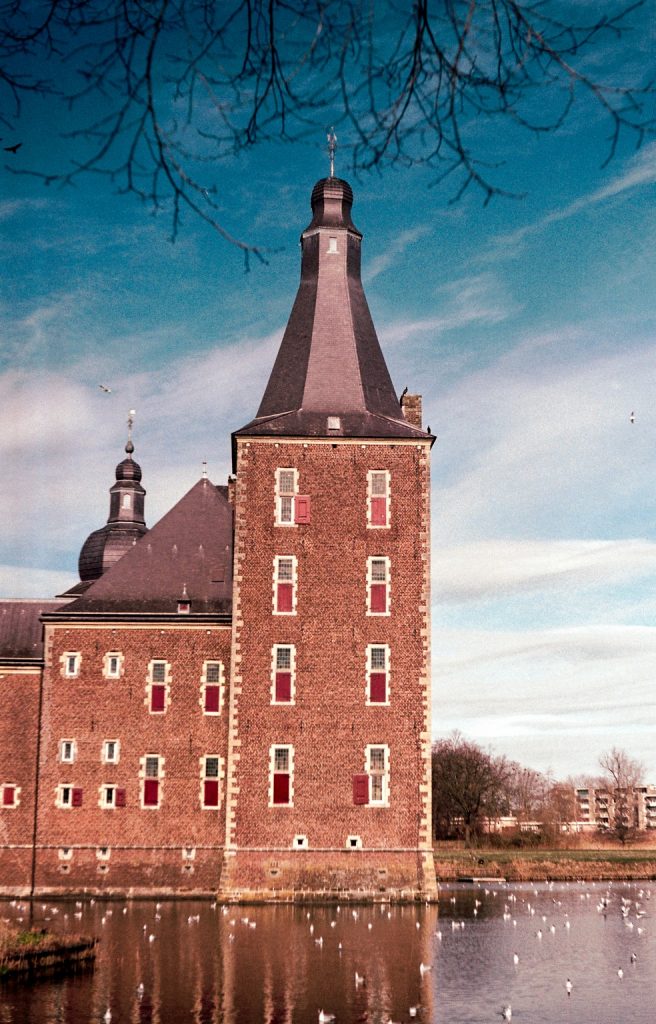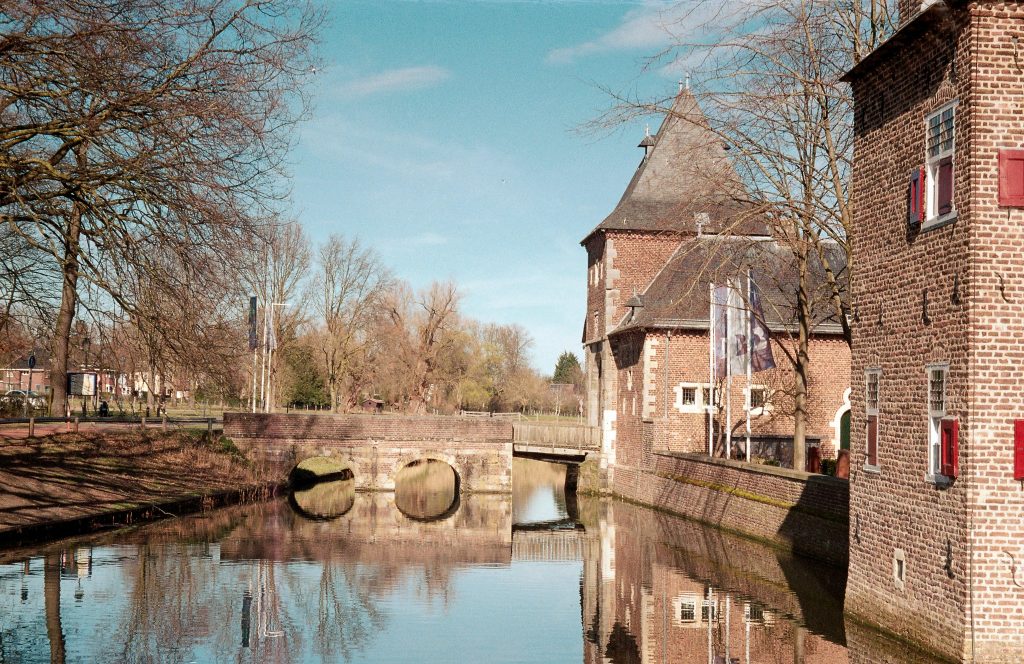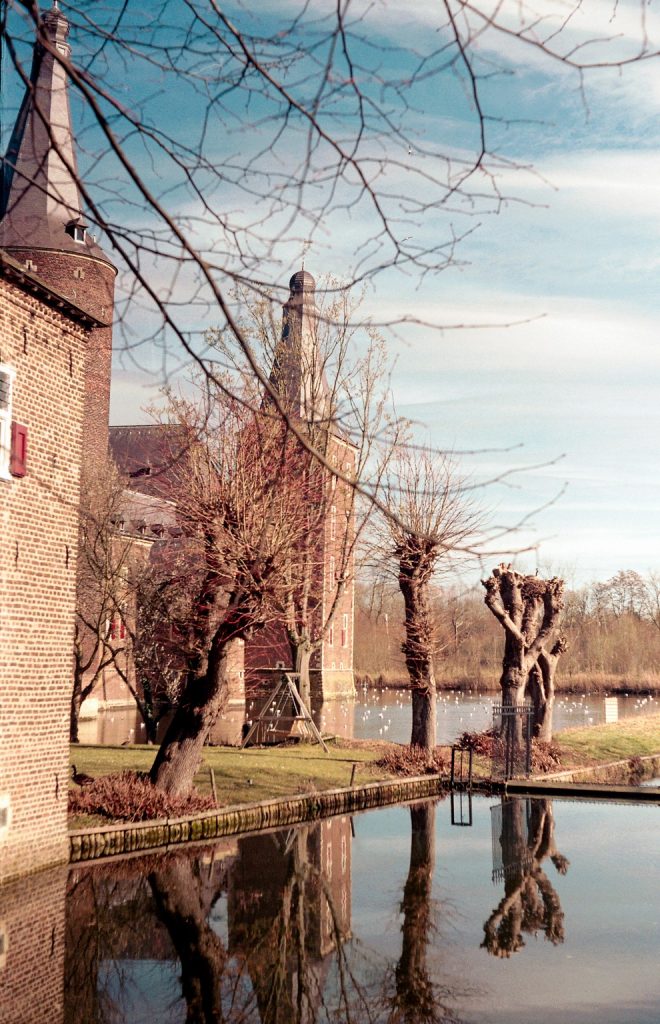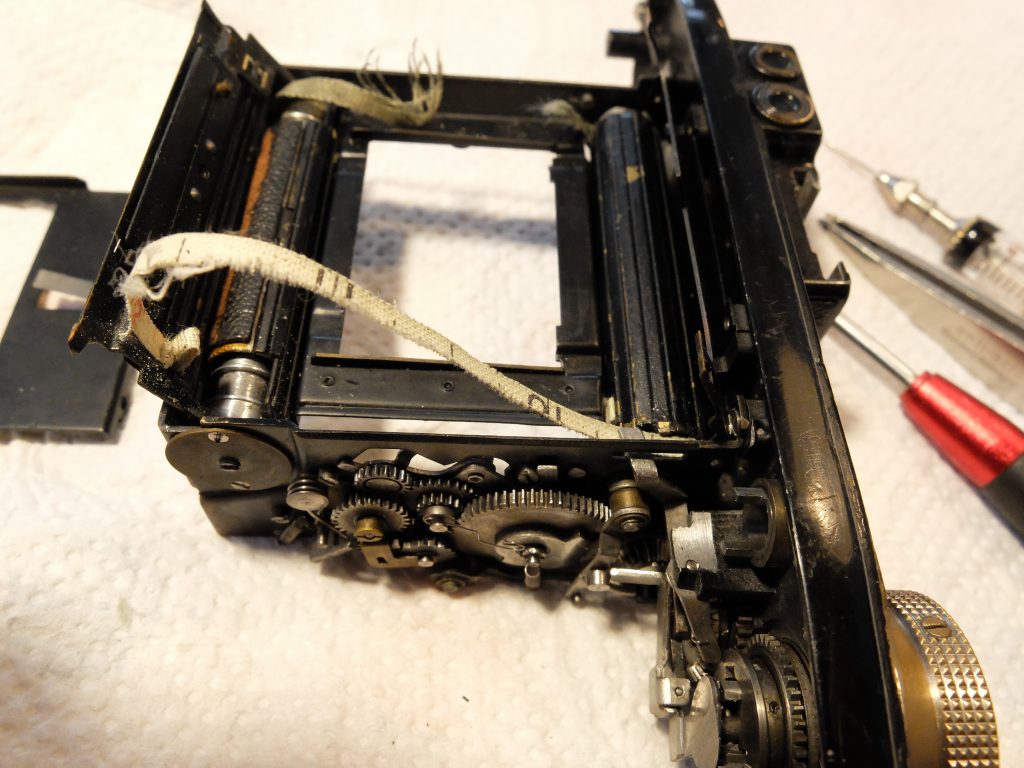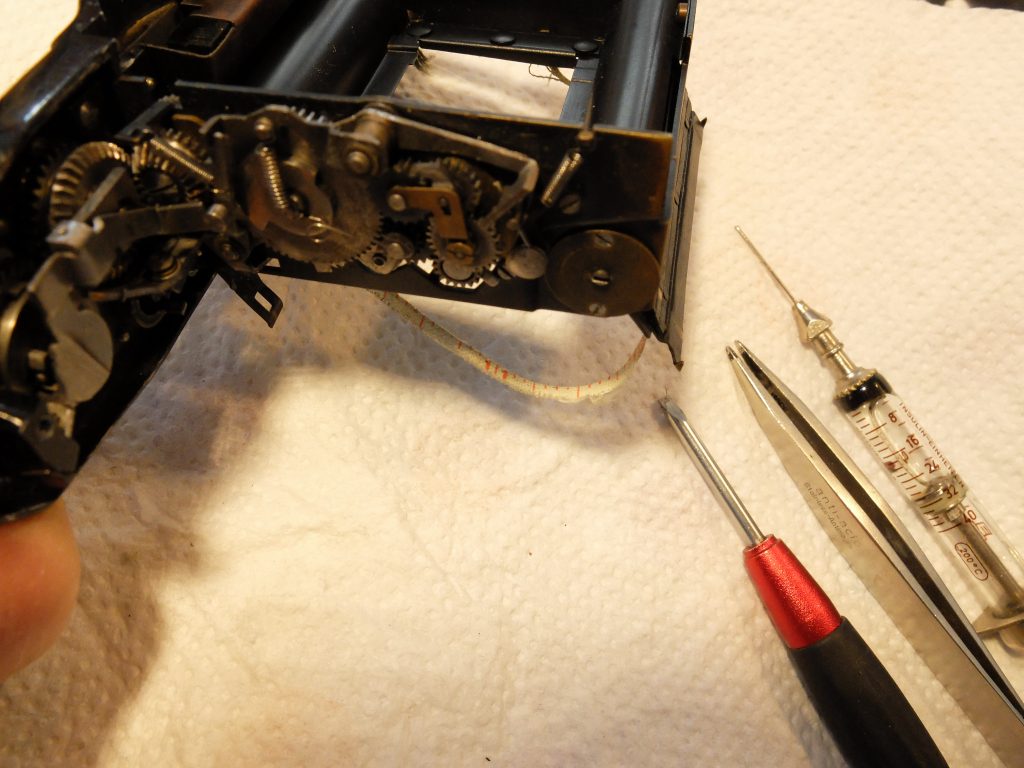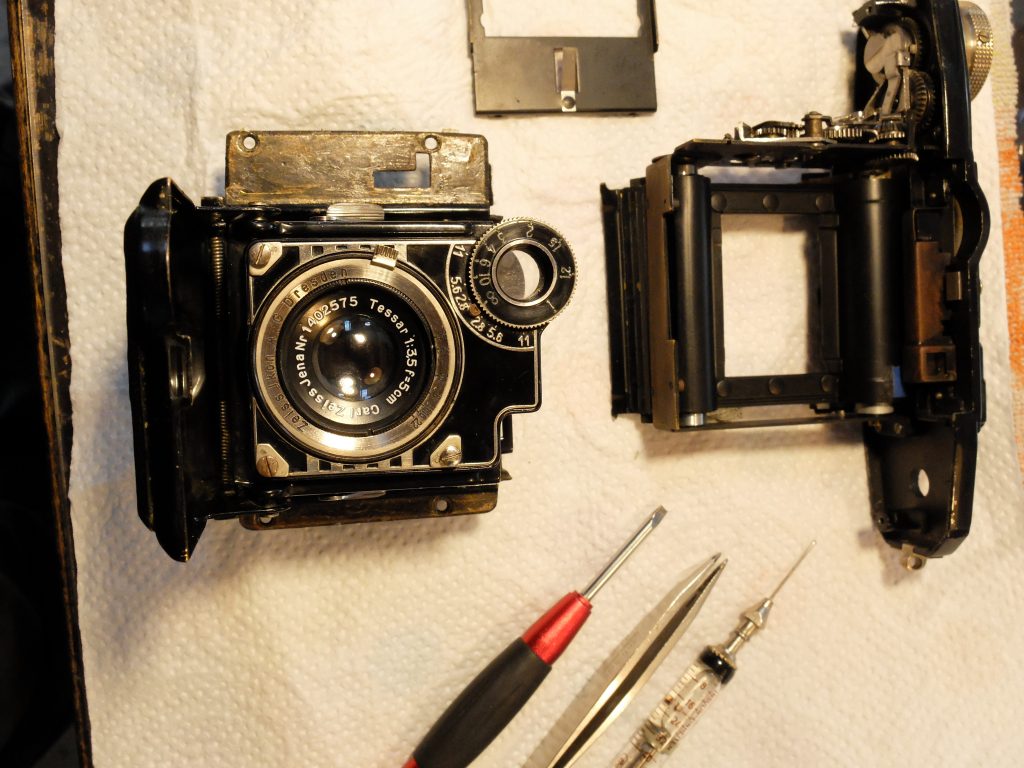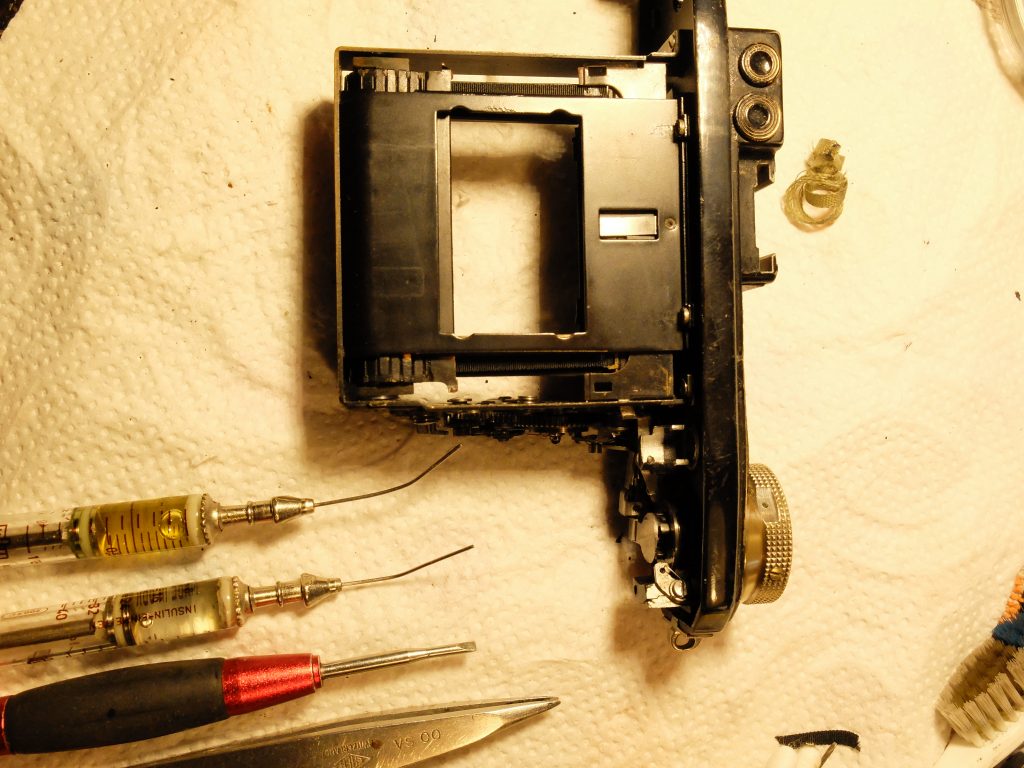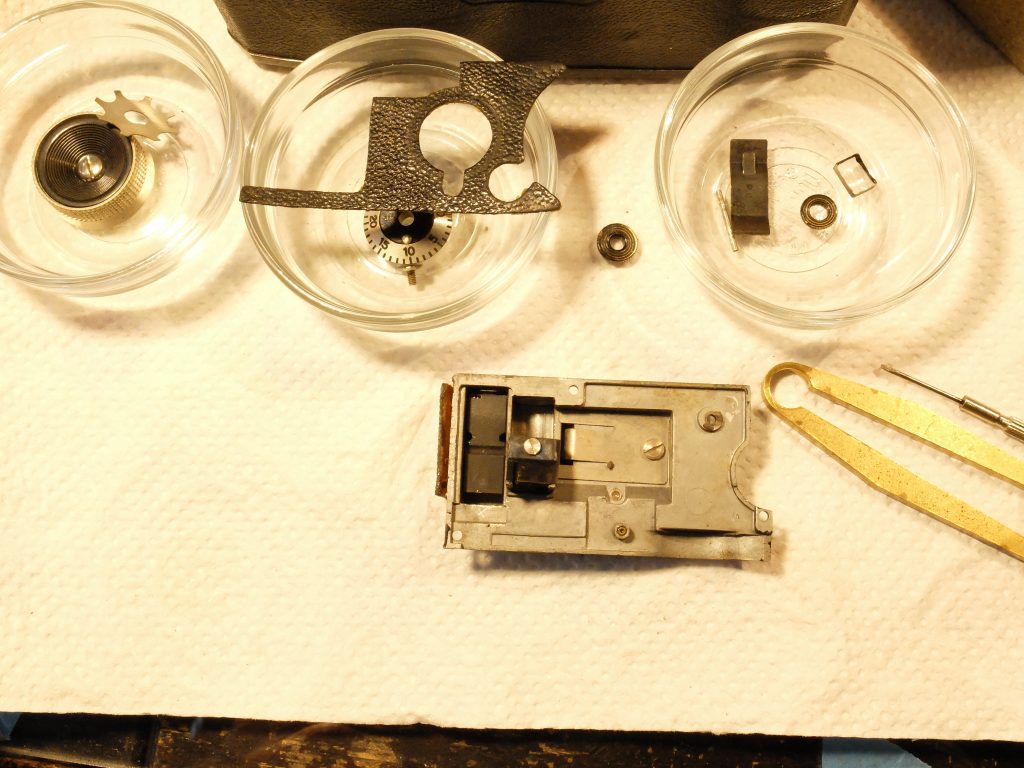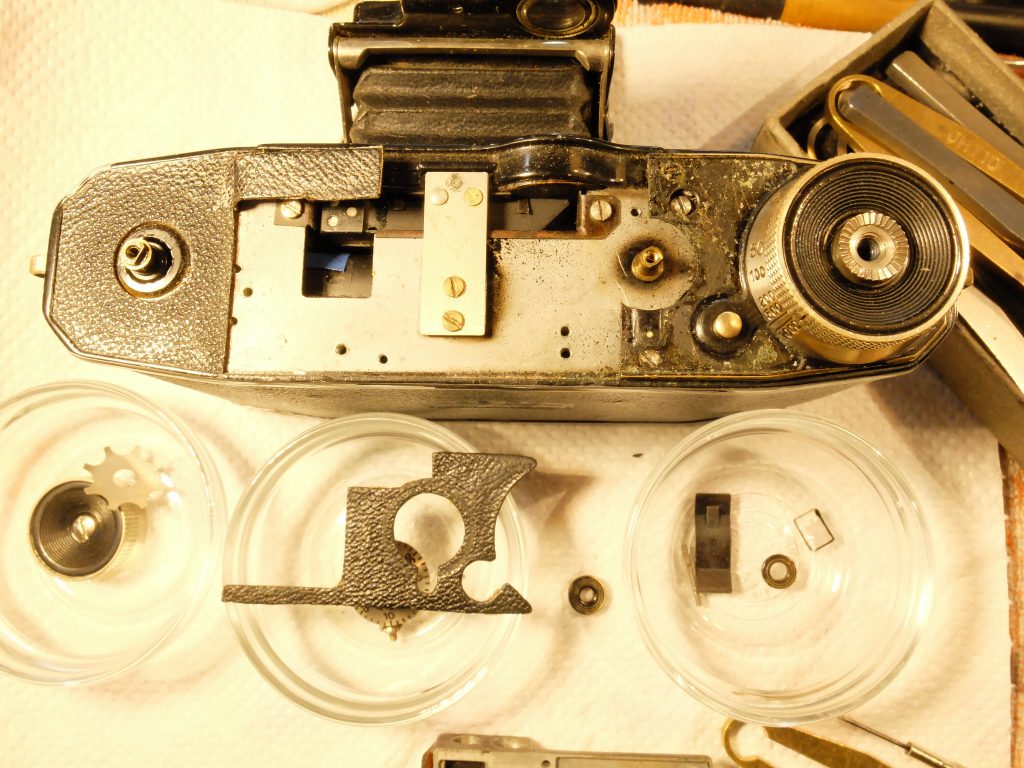Something big can be stored in a modest small housing. In the early thirties the Super Nettel from Zeiss Ikon became the little sister of the Big Contax. Cheaper, a fixed lens, but in no means less beautiful, charming and even a little extravagant. Just the right qualities to fit in my personal top 5. What a Barnack is for Leica, is the Super Nettel the derivative for Zeiss-Ikon.
People like, no even love the black Leicas from the late twenties and early thirties. Zeiss Ikon was by all means black till after the war. Most of their cameras were housed in black finished metal and packed with leather, with the Super Ikontas as their pride models. Codename 536/24 was no different. The small Super Nettel has its name given by the fact that it had a coupled rangefinder to focus with one of the 3 fixed lenses, either the Tessar F2,8 or F3,5 or the cheaper Triotar F3,5, all 5cm focal distance.
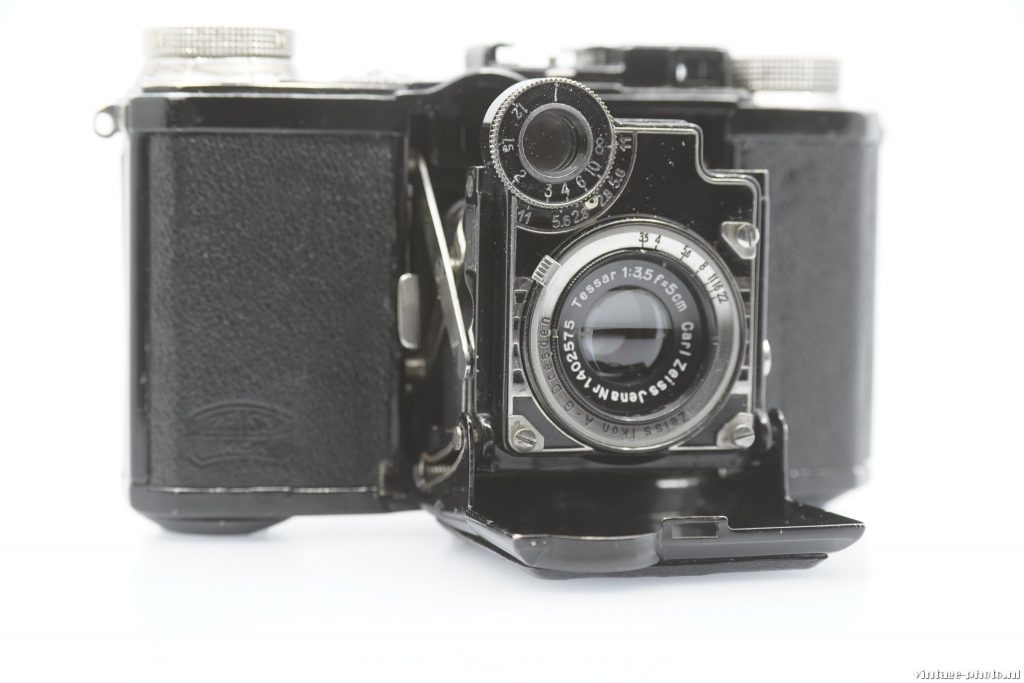
How older she gets, how more beautiful she grows. The brass metal is coming to life after 86 years. It is shining around the knobs and breaking through the black top. The camera is not perfectly rectangular, but has a somewhat curved finish. Half rounds, diagonal corners. The best metal used for the big and small knobs. A nice leatherette with the brand stamped. Sturdy, easy to hold, not heavy like the big brother. The eyecatching part is the lens housing after the short leather bellows. It contains the lens that is fitted into the aperture ring that ranges from F3,5 to F22. It can be turned by a small lever. Much attention has been paid to the lens base board with metal details, horizontal pieces of chrome over the black base. On the left side above the lens is the focusing wheel for precise focusing. It also displays the distances. The focus is passed to the two rangefinder windows which in turn mix this image and provide the parallax that allows the photographer to focus.

On the top plate there are two large knobs. The right one is meant for cocking the shutter and setting the exposure speed by lifting it. It is 1935 and we already see a fast shutter speed of 1/1000s. A great achievement for that time, thanks to the fast vertical metal focal plane shutter that we also see in the Contax. Tt works like a roller shutter with vertical slats that are pulled up by a shutter tape. Mine were broken but the tape is still available in different widths, so a specialist can replace them. It is the most common cause the old Nettels do not fire anymore. The shutter times go down to a fifth of a second and B. Next to the knob is the automatic photo counter. In the middle is the cold shoe for fitting an accessory, mostly finders and a flash cannot be used, since there is no connection whatsoever.

The back slides off after rotating the two big knobs on the bottom plate. Inserting a 135 or 35 mm film is easy. These camera’s already used the first perforated film that is still available. There is also a rare plate-holder that can be attached. In the old days film (up to 30 meter available in tin boxes!) was cut and loaded onto empty spools in the dark room, so that rewinding is not nessecary, the film goes from one to the next spool. The ‘newer’ cartridges (as they referred to as to our normal 135 rolls meant rewinding the exposed film back into the original cartridge. For that the little knob next to the shutter exists, to unlock the rewinding knob.

The lenses have a screwing thread for adapting filters and Proxar close up lenses. More accessories consisted of alternative Albada sportfinders, waist-level finders, flexible shutter release cables, delayed action shutter release and a special collapsible lens hood. And who really wanted to flash, could do so with the special Flash bulbs mounted on the cold shoe which was ingeniously designed to operate the shutter and the bulb simultaneously.

The Super Nettel was introduced in 1934, but had not a long life span. In 1936 it was succeeded by the second model in chrome that only lasted for about a year. The Contax was far more popular as it had to compete with Leica. The little sister ended up to be an extravagant, but desirable camera that had it all. The looks, the engine and the charm.
And than misfortune happened. My Super Nettel broke. At least the shutter tape broke, but fortunately I found someone who repaired the tape after which the Nettel came back to full life. It got a full CLA and is as new. Here some impressions from the work carried out by Petrakla.
Here our 360 rotation presentation of the Super Nettel.
